Raising Water Consciousness through
World’s Biggest Photo Exhibition and
Largest collection of Photo Stories on Water
Photo Stories | Drinking Water
Varied Drinking Water Sources
Nandita Singh and Om Prakash Singh
23 February, 2016

Drinking water is obtained from varied sources in different parts of India. Differences in topography, stratigraphy, ecology, climate and the resultant differences in nature and availability of water resources determine these variations. In mountainous and hilly regions in the northern and north-eastern states, such as Himachal Pradesh, Uttarakhand, Nagaland and Arunachal Pradesh, springs along the slopes and small tanks at hill bases are the common traditional drinking water sources. Sometimes, depending upon the stratigraphy and water availability, shallow handpumps may also be installed. In the Ganges plains, especially in Uttar Pradesh, Bihar and West Bengal, water table is generally high. Consequently, wells harvesting shallow aquifers are the common traditional source, besides shallow handpumps. For this reason, wells and handpumps are common at household level. Kerala in the south exhibits a similar trend. In western and rest of Peninsular India, water table is generally low. Consequently, creating drinking water sources requires much efforts and resources. As a result, in states like Rajasthan, Gujarat, Madhya Pradesh and Maharashtra, public wells, often big and deep, are a common traditional source. Handpumps are also public and rather deep. In areas where stratigraphy allows retention of surface water, ponds and tanks that collect local runoff, are also used. Finally, irrespective of the region, rivers and streams may also be directly used for procuring drinking water. Piped water supply is becoming a ubiquitous modern source in India. Public standpoints are common in villages and informal urban colonies while individual household connections are common in the formal urban settlements. These systems depend upon groundwater, rivers and lakes, or on hillside streams and springs. Tankers are another alternative in informal urban colonies, as are in rural areas when regular sources like handpumps, wells or springs dry up. This photo story takes us through a tour of the varied drinking water sources in India. The title photograph is of a drinking water well in Alappuzha district, Kerala - a source on which more than 11% of the country’s households depend.
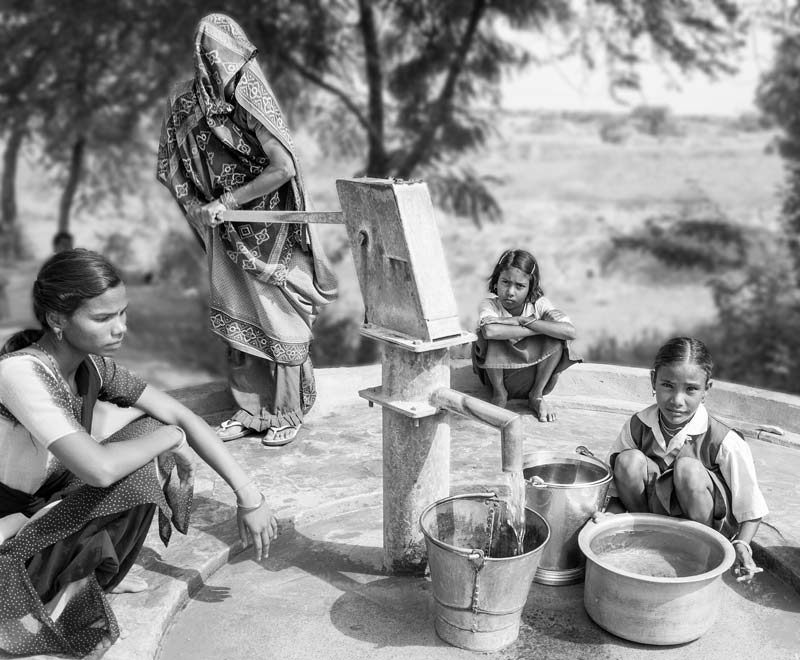
More than 33% of households in India depend upon handpump as the main drinking water source. These can be public or private. A public handpump in district Morena, Madhya Pradesh
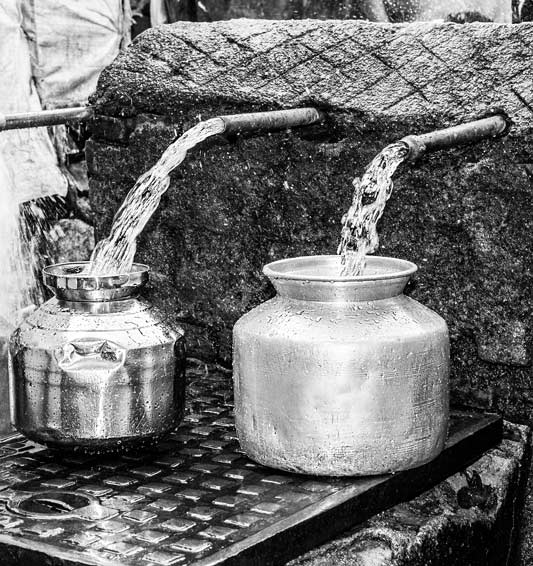
About 44% of total households in the country depend upon tap water supply. Many households have private connection while others depend on public standpoints. A public standpoint in Mumbai, Maharashtra
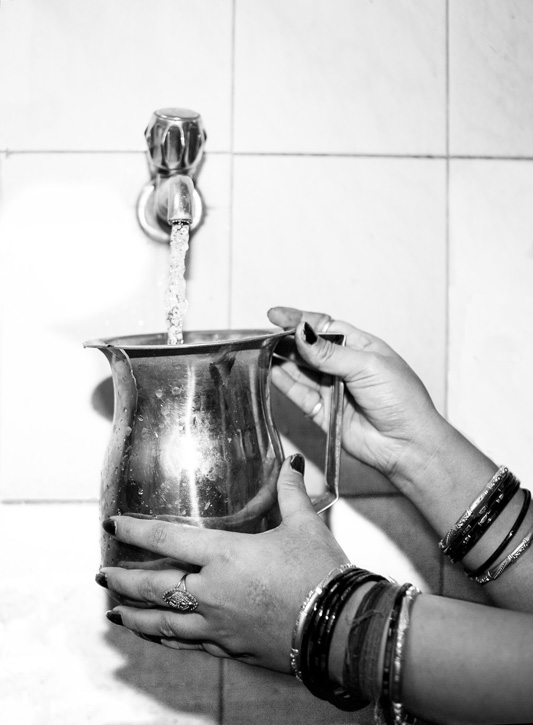
A private tap water source in South-East district, National Capital Territory of Delhi
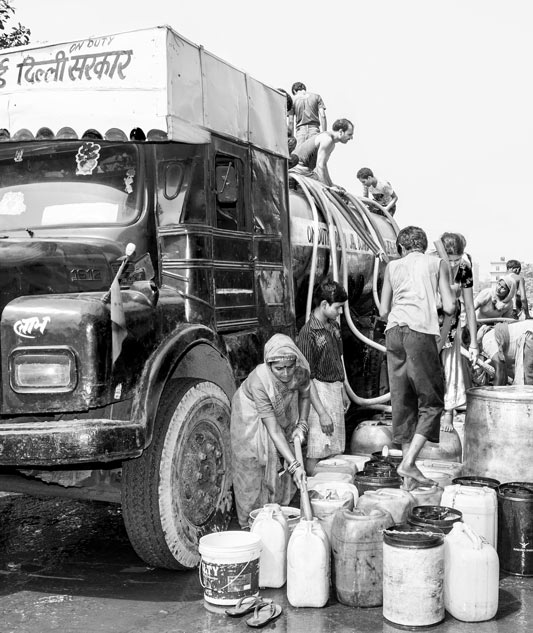
Tankers are a common drinking water source in informal urban colonies where piped water or any other alternative is absent. These are also a source in rural areas when handpumps, wells or springs dry up seasonally. A water tanker in South-East district, National Capital Territory of Delhi
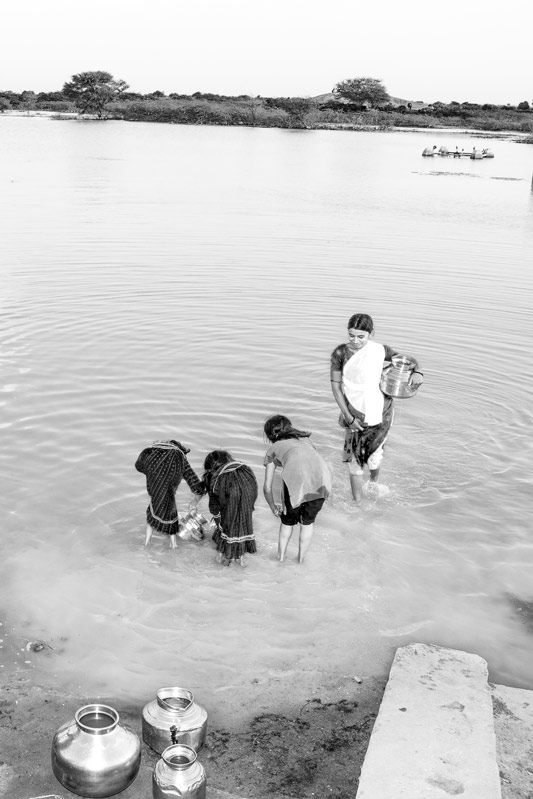
A pond in use as a drinking water source in district Kutch, Gujarat
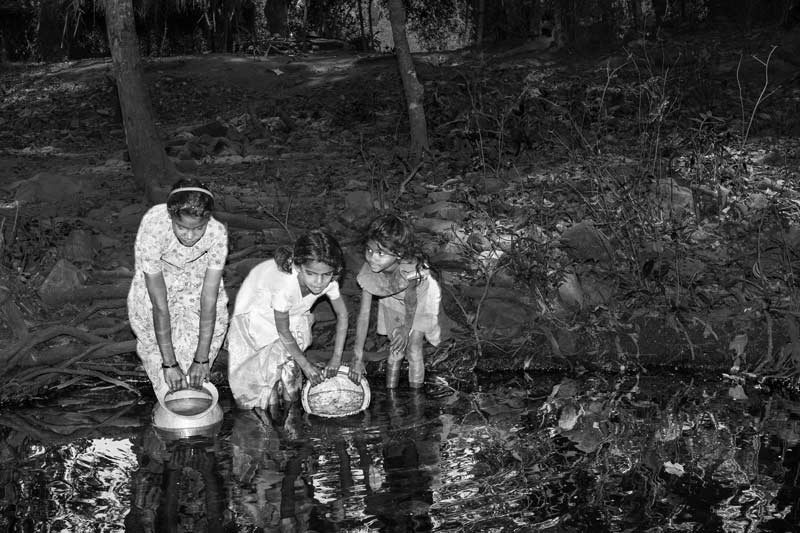
Drinking water is also taken directly from rivers and streams in the absence of any other source. Drinking water being collected from a forest stream in Chittoor district, Andhra Pradesh
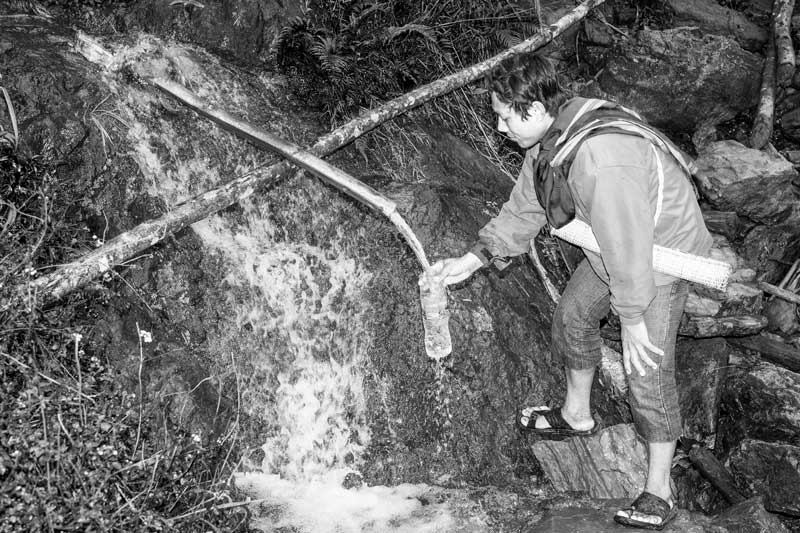
In the North-Eastern states, springs along hillslopes are transformed into drinking water sources using bamboo pipes – district West Siang, Arunachal Pradesh
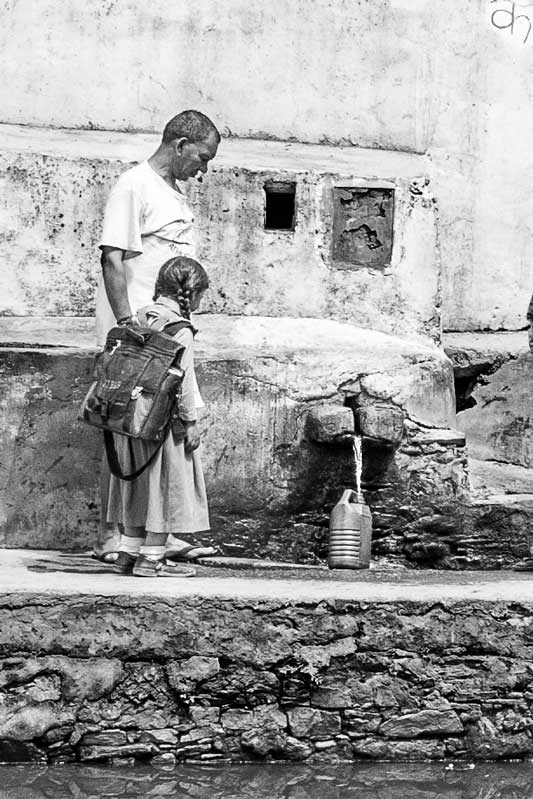
In the Western Himalayas, 'chahal' is a traditional drinking water source on the hillslopes which is actually a protected spring. Water from the chahal is first collected for drinking and then allowed to flow into a tank where animals can drink. The water further overflows to kitchen gardens and fields located downstream – district Tehri Garhwal, Uttarakhand
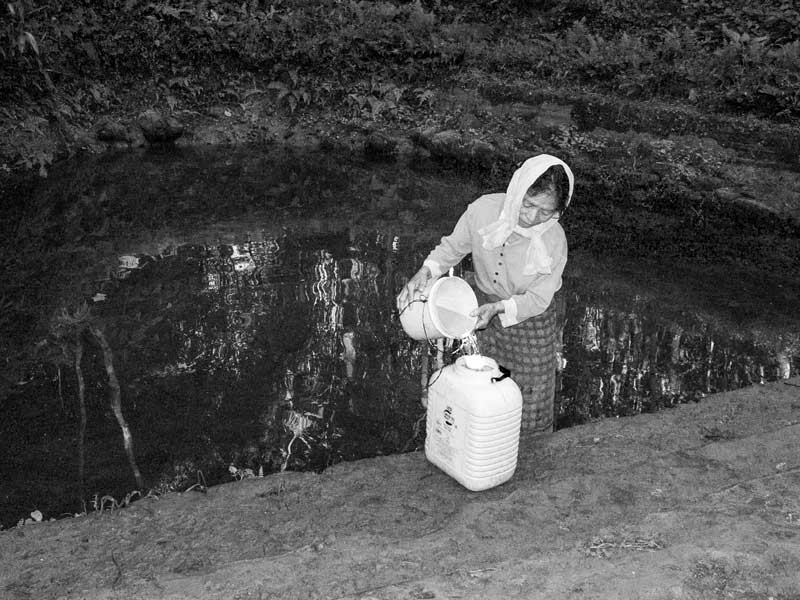
In North-East India, spring water is collected in small tanks at the base of hills by constructing an embankment. This water is then taken for drinking and other domestic purposes – Mokokchung district, Nagaland
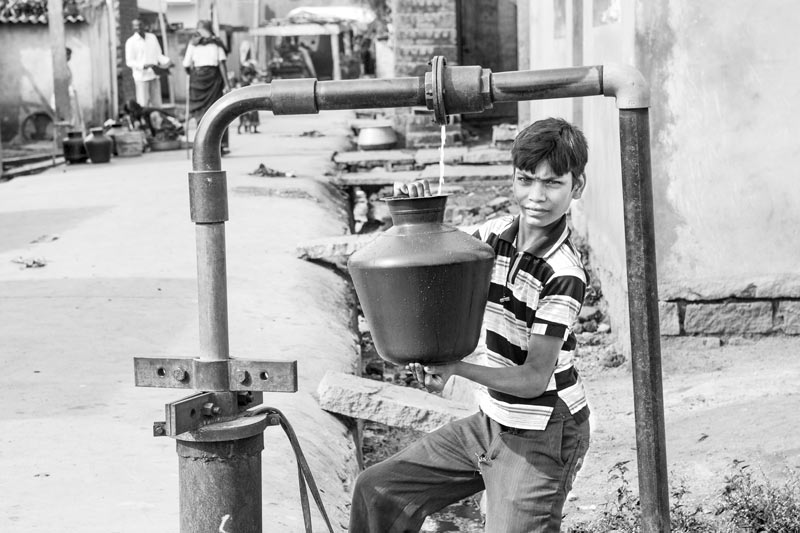
Many a times, leakage from the main source of public water supply itself serves as a drinking water source, especially if the intention is to avoid long queues and rush. At a borewell source in Kolar district, Karnataka
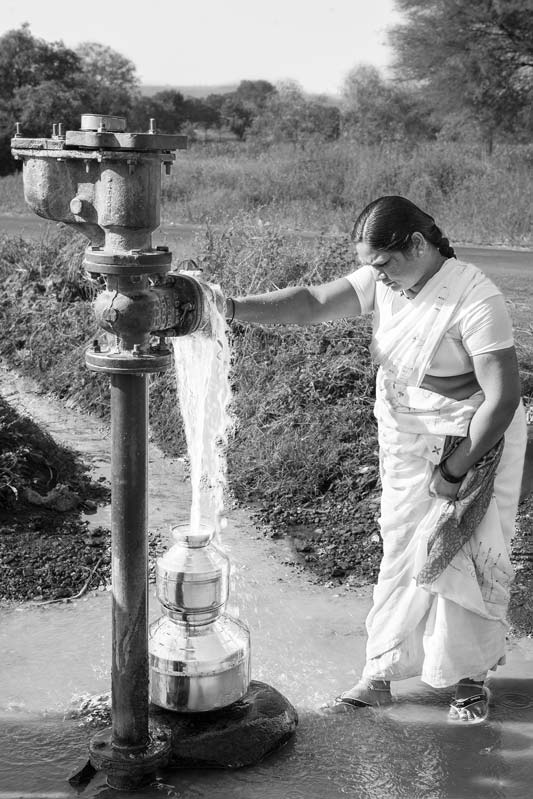
Many a times, leakages at valves along underground main pipelines are utilized as drinking water sources in the local rural and urban settlements – Ahmednagar district, Maharashtra
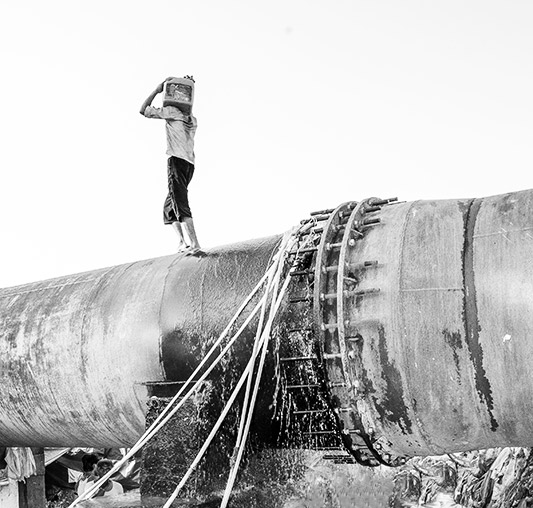
Many a times, leakages at joints between pipes in the main water pipeline passing across settlements serve as drinking water source. The leaking water is collected either directly into containers or through plastic pipes inserted into the leakage – Mumbai, Maharashtra
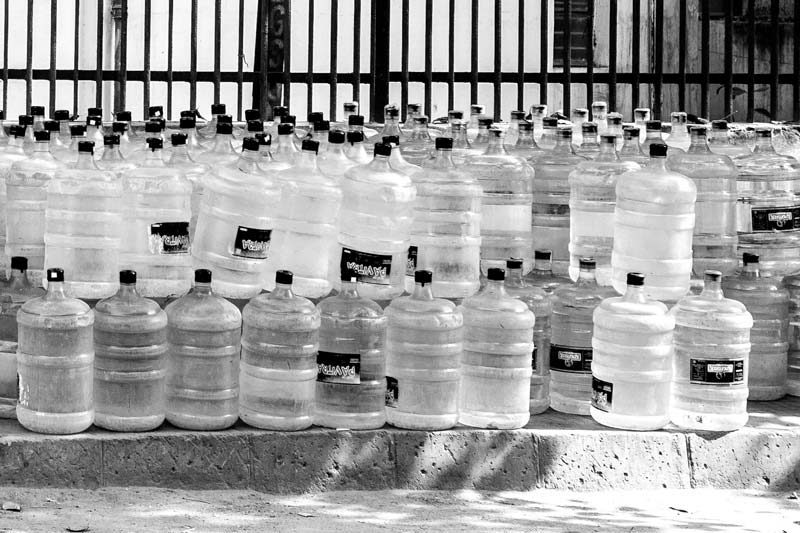
When the drinking water quality is unreliable or the water supply becomes irregular, dependence on bottled water as a drinking water source becomes a compulsion for many. 20 liters water bottles ready for sale in South-East district, National Capital Territory of Delhi